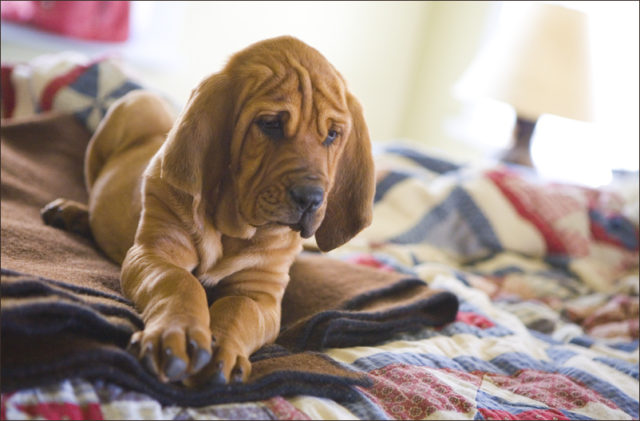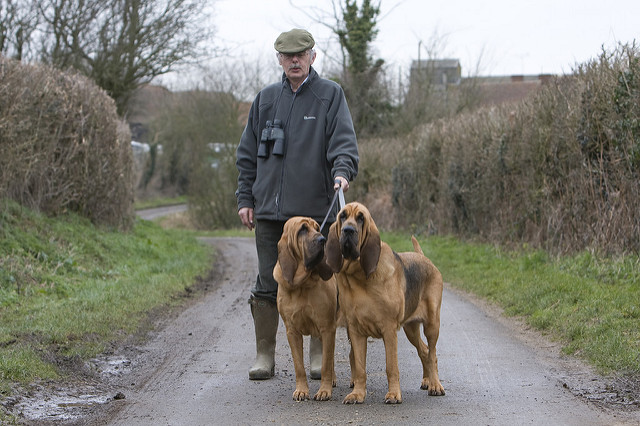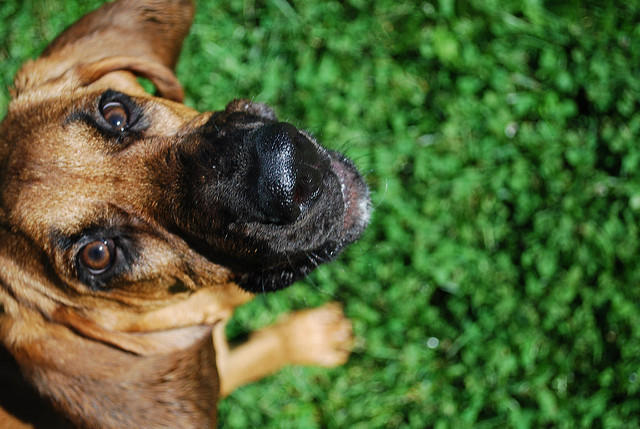With their massive layers of wrinkles, deep-set brown eyes, and “hang-dog” jowls, Bloodhounds look more like sleepy old men than energetic, life-saving heroes! But don’t let this ancient breed fool you, they are far from the lazy, porch-dwelling pups Hollywood often portrays them to be. While Bloodhounds are indeed gentle, affectionate family dogs, they also have the perfect anatomy and innate skill to do what no other breed can when it comes to nosework.
The following 5 facts prove just how remarkable this breed truly is.
1. Their signature wrinkles and long, floppy ears actually serve an important purpose.

Bloodhound’s have a loose coat that is thin to the touch, especially around the neck and head. This causes deep, hanging folds and the wrinkles we all know and love. The flap of skin beneath their throat is known as a dewlap and is a standard characteristic of the breed.
Aside from giving them their distinctive sad-puppy-dog appearance, these ridges, folds and wrinkles actually aid the Bloodhound in their trailing endeavors. Combined with their long, floppy ears, these features help the Bloodhound waft scents from the ground up to their sensitive noses and trap them there.
2. The term “Bloodhound” does not refer to their trailing ability.

Contrary to popular belief, Bloodhounds were not named for their ability to trail hot-blooded creatures. The term “Bloodhound” actually refers to the fact that early breeders went to great lengths to record their ancestry and preserve the purity of their bloodline. “Blooded Hound” may be a more apt name for the breed based on their history.
3. A Bloodhound can follow a 300-hour-old scent trail.

The Bloodhound is often referred to as “a nose with a dog attached.” It is estimated that they have approximately 250 – 300 million scent receptors — the most of any breed. Once they have identified a scent, they can follow that specific smell, despite all the other odors they encounter, for more than 130 miles!
Their sense of smell is so powerful that they can pick up and follow a scent trail up to 300 hours after the source has left the area – that’s a 12 day-old smell!
4. Despite their unparalleled tracking abilities, they are notoriously difficult to train.

Bloodhounds are working dogs born and bred to trail scents, and once they become engaged they can stay focused and determined for hours, if not days. The very characteristics that allow them to excel at police work and search & rescue missions can also get them into trouble if they become bored.
Calm and gentle by nature, Bloodhounds are also tough, stubborn, cunning and independent. They have been known to “counter-surf” for goodies, chew furniture, and escape from any yard that is not Fort Knox-secure if they catch an interesting scent on the breeze.
On top of it all, Bloodhounds are very sensitive and do not respond well to stern training. They need positive reinforcement, lots of exercise, and plenty of opportunities to utilize their powerful sniffers.
5. Their “testimony” is considered admissible in a court of law.

The Bloodhound’s scent capabilities are considered so powerful and reliable that many American courts allow the results of their nosework to be entered into evidence! According to Justia US Law:
“Evidence of the trailing of human beings by Bloodhounds is admissible as a circumstance to corroborate other testimony offered by the state. The Bloodhound in question must be shown to have been trained to follow human beings by their tracks and to have been tested as to its accuracy in trailing upon one or more occasions.”
H/T to Vetstreet.com
